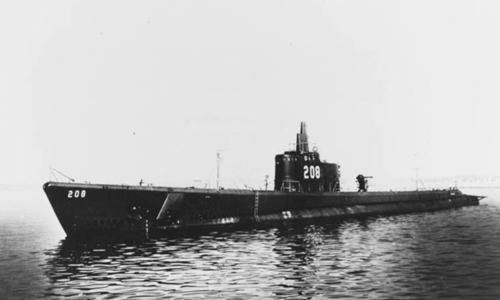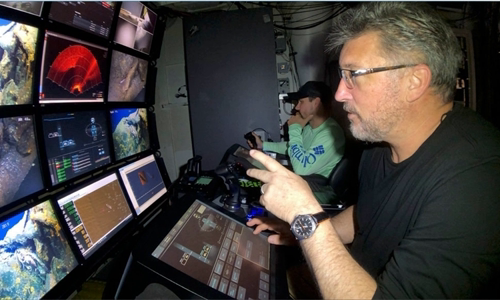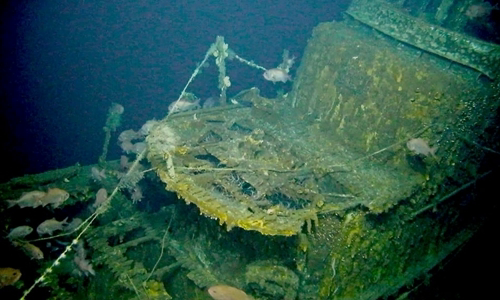Wrong interpretation of a single digit in the coordinates from Japanese records prevented the USS Grayback from finding the missing submarine for 75 years.
On January 28, 1944, the USS Grayback submarine was ordered to leave Pearl Harbor for a 10th patrol on the East China Sea. A month later, the sailors on the submarine reported to headquarters that they had fired torpedoes to destroy two Japanese Nazi cargo ships.

The submarine USS Grayback in 1941 Photo: CNN
With only two torpedoes left, USS Grayback was ordered to return to base, scheduled to dock at Midway on 7 March 1944. But three weeks later, the ship still did not appear at the port. At the end of March 1944, the US Navy declared that this submarine was missing.
After World War II ended, the US Navy used the records of the Japanese military to gather information about the 52 missing submarines and compile historical documents published in 1949 to serve the search. . They determined that USS Grayback disappeared at a point about 160 km southeast of Okinawa Island in Japan.
However, many search efforts have been conducted for decades, but they could not find the missing submarine. Everything only changed when explorer Tim Taylor joined his colleagues at Project Lost52, specializing in using new technology to find missing weapons from World War II.
Not found until. In 2010, Taylor discovered the submarine USS R-12 sunk in an accident off Key West, Florida in 1943. He formed the group.
Taylor relies on an important discovery by Yutaka Iwasaki, an engineer in Kobe, Japan. Iwasaki had a crush on Japanese merchant ships during World War II and 4/5 of them were sunk during the war. To explore the history of these ships, he was forced to study submarines. "For me, the search for American submarines is a way to show the tragedy of war," he said. "It is my hobby and also my passion."

Tim Taylor, who led the submarine search project Photo: Lost52
Last year, when Iwasaki studied Japanese military documents, he discovered the report that on February 27, 1944, Japan's Nakajima B5N aircraft dropped a bomb weighing more than 200 kg into a submarine. are floating. The submarine exploded and sank immediately, with no one surviving.
"In that report there was a very clear longitude and latitude of the attack," Iwasaki said, referring to the sunken submarine as USS Grayback.
However, when comparing with the records from the US, he discovered that the US Navy made a mistake when translating the Grayback coordinates was attacked, causing them to find the wrong place for decades. "Only one digit is wrong, but the position is off by about 160 km".
Once they got the right coordinates, Taylor's team arrived in Japanese waters in June. They searched the 400-meter-deep area with the main tool being a 4.2-meter unmanned diving device. It dives into the sea and uses the hydro-navigational navigation system to search for the ship.
When there was only one day left to complete the survey, the diving equipment encountered an error when it had only completed one third of its tasks. While others wanted to return to the port to repair the equipment, Taylor dropped the images it took to see.

USS Grayback submarine under the sea Photo: Lost 52
He quickly discovered two suspicious objects on the sea floor and dropped another device to investigate. Unlike the aforementioned unmanned diving device, this type is controlled from the mother ship and has a high-definition camera.
After a few hours of operating the seabed bottomline surveying device, Taylor saw the hull of Grayback, about 100 meters away, the turret on the deck was detached after the bomb exploded. "We are excited," Taylor said. "However, the atmosphere is also very solemn because we have found 80 Americans killed."
The next day, Taylor and the crew held a ceremony to commemorate the sailors on the ship and read the names one by one. One of the names on the crew list was John Patrick King.
King's grandson, John Bihn, received a message from his sister two weeks ago, announcing that the Grayback was found. "I was dumbfounded, it was unbelievable," Bihn said.
Bihn said the video recorded by the diving equipment showed the image of the submarine's bridge and the board with the words USS Grayback. "As if someone was wiping it clean," Bihn said. "Like it wants to be found".



 SherriBravo
SherriBravo







